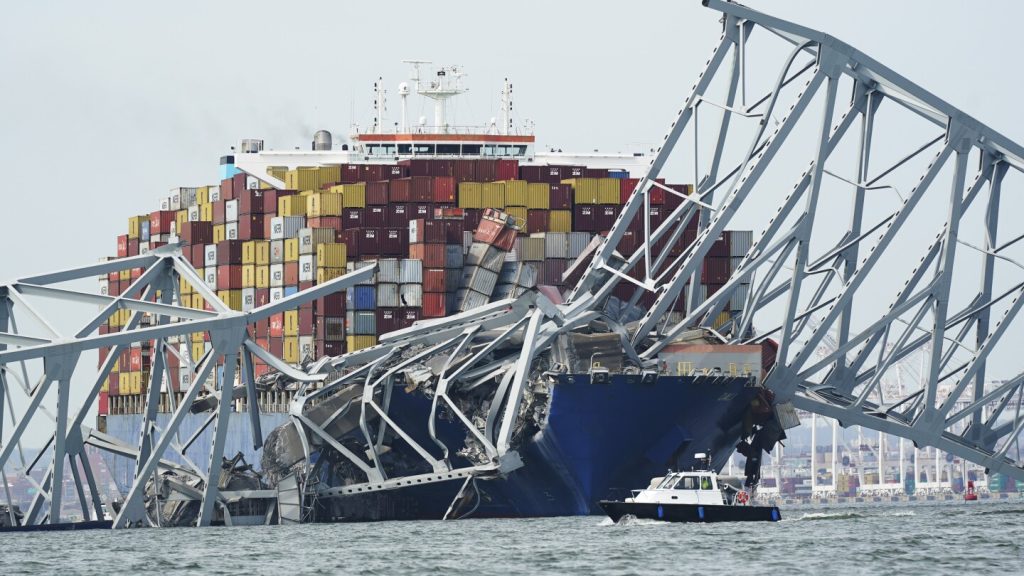A cargo ship lost power and rammed into a major bridge in Baltimore early Tuesday, destroying the span in a matter of seconds and plunging it into the river. The incident is expected to disrupt a vital shipping port for months. Six people, who were part of a construction crew working on the bridge, were missing and presumed dead. The crew issued a mayday call just before the crash, allowing authorities to limit traffic on the bridge. The ship struck one of the supports, causing the collapse of the structure.
Rescuers pulled two people out of the water, with one being treated at a hospital and discharged later. Multiple vehicles also went into the river, but authorities did not believe there were people inside. The bridge collapse happened in the middle of the night before the busy morning commute. The six missing individuals were part of a construction crew filling potholes on the bridge at the time. The crew members were presumed dead due to the depth of the water and the length of time since the crash.
The collapse of the bridge is likely to have a significant impact on the region, disrupting both cargo and commuter traffic for months or even years. The incident will shut down ship traffic at the Port of Baltimore, a major shipping hub, affecting the flow of goods along the East Coast. It is unclear how long it will take to clear the channel, which is about 50 feet deep. The span of the bridge ended up on the bow of the ship after the collision, which caused a fire on board.
The ship, named the Dali, was moving at 8 knots when it hit the bridge, causing substantial damage to both the vessel and the structure. The ship was under the control of one or more pilots at the time of the crash. All crew members and pilots were accounted for, with no reports of injuries. The incident has raised concerns about bridge safety and the impact of ship collisions on infrastructure. The President has pledged federal support for the rebuilding of the bridge and promised a swift response to the disaster.
The collapse of the Francis Scott Key Bridge has sent shockwaves through the Baltimore community, with witnesses describing the event as if it came out of an action movie. The bridge was left in ruins, with jagged remnants visible in the water. The sudden collapse has raised questions about the structural integrity of the bridge and its ability to withstand such impacts. The bridge, named after the writer of the national anthem, spans the Patapsco River and provides a crucial link for transportation in the region.
The Port of Baltimore, which handled a record amount of foreign cargo last year, is expected to face significant disruptions following the bridge collapse. The incident is likely to lead to shortages of goods and impact shipping operations along the East Coast. While the collapse may not have a direct impact on global trade, it will have ripple effects on industries that rely on the port for imports and exports. Authorities and experts are working to assess the damage caused by the crash and develop a plan for recovery and reconstruction.
The devastating accident has sparked an outpouring of support and sympathy for the victims and their families. Rescuers continue to search for the missing individuals, hoping to find them alive. The collapse has highlighted the risks associated with maritime transportation and the importance of ensuring the safety of bridges and other critical infrastructure. As the community grapples with the aftermath of the tragedy, officials are focused on addressing the immediate challenges and planning for the long-term recovery of the affected area.


